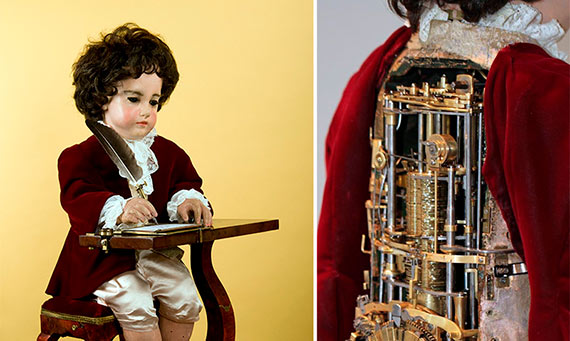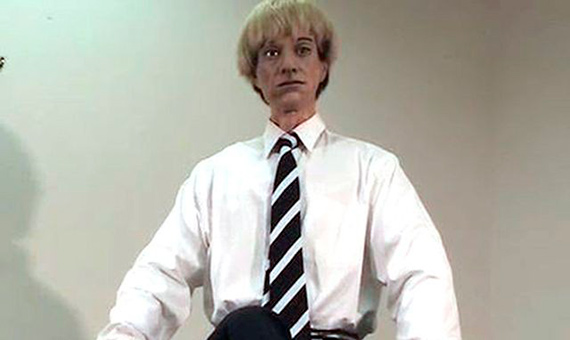“There is nothing very remarkable about being immortal;
with the exception of mankind, all creatures are immortal,
for they know nothing of death.”
Jorge Luis Borges
In 1543, Andreas Vesalius published De humani corporis fabrica in Basel. In this work he reflected, with abundant illustrations, his anatomical knowledge acquired through performing dissections. The use of the term “factory”, with architectural connotations, reflects his conception of the human body as a complex structure from which he analyzes each of its parts. Francis Bacon’s and Rene Descartes’ development of philosophical mechanics in the seventeenth century shows a change in the conception of reality that ended with differentiating between the theoretical sciences –liberal– and the mechanical sciences. In his utopian novel, New Atlantis, Bacon devised a civilization in which the mechanical arts aided the lives of human beings. Meanwhile, Descartes wrote: “I do not recognize any difference between artifacts and natural bodies.”
The mechanistic conception of nature together with technical advances favored the popularization of automatons. These machines imitated the figure and movements of animated beings that have, in fact, been known since antiquity. It is said that Descartes himself built an automaton that reproduced his own daughter, Francine, because of the pain of her death when she was just five years old. The main creators of this type of ingenuity include, as early as the eighteenth century, Jacques de Vaucanson and Pierre Jaquet-Droz, from whom magnificent examples have come that are still in operation.

The Jewish legend of the golem, which breathed life into an inert matter, was reinterpreted and brought into relation with scientific research in Mary Shelley’s Frankenstein. As pointed to in its original title, Frankenstein or The Modern Prometheus (1818), it snatched the sacred fire of life from the gods to give place to a monstrous concoction. In 1920 the Czech playwright Karel Čapek in his work, R.U.R. (Robots Universales Rossum), used the term robot for the first time to refer to creatures artificially created to work as slaves. Endowed with their own thought and with an anthropomorphic aspect that would resemble what we would call androids today, they ended up being revealed to destroy humanity. The idea soon became popular through literary fiction and films, giving rise to characters so well-known as the False Maria that replaces the protagonist of Metropolis (Fritz Lang, 1927).

Rebecca Allen, in the catalog of the Souls & Machines exhibition recalled that the proliferation of computers in the second half of the twentieth century gave it an increasingly mysterious nature, the possibility that it had a soul and was able to decide its fate. At the same time, different artists experimented with the possibilities of what ended up being called robotic art. Nam June Paik was a pioneer in this regard with K 456 (1964), a remote-controlled robot. Together with this individual, Eduardo Kac, highlighted two other foundational milestones of the relationship between art and robotics: Tom Shannon’s Squat (1966), which inaugurated the association between organic elements –a living plant– and inorganic –metallic structure and engines; and Edward Inhatowicz’s The Senster (1969-1970), a “cybernetic sculpture” capable of responding to its environment that explored the possibility of these creations acting with autonomy. From these first experiences other artists have opted for robotics as a way of expression, as Ricardo Iglesias reflects in his book Art and Robotics: Technology as aesthetic experimentation. Andy Warhol himself, shortly before dying in 1987, agreed to the proposal to build his very own animatronic double which, he hoped, could replace him in his public appearances. An attempt to identify between humans and machines that could well be illustrated by “uncanny valley” theorized by Masahiro Mori. According to this theory, the more a robot resembles a real person, the more positively it is received by the observer, to a turning point in which it is strongly rejected by humans and this is only overcome when the difference in the way the two look becomes virtually indistinguishable.

The creation of artificial life forms is closely related to the improvement of natural life forms. In the 90’s, it was fabled with a future in which virtual reality would make it possible to experience physical sensations from simulated environments, as reflected in films like The Lawnmower Man (Brett Leonard, 1992, based on a Stephen King story published in 1975) and Strange Days (Kathryn Bigelow, 1995). A technology still under development that creators like Alejandro González Inarritu have recently explored in Flesh and Sand, presented at the 2017 Cannes Film Festival, the director proposes experiencing first hand the reality of an illegal immigrant harassed by a patrol on the southern border of the US.
While our constant presence in non-sensorial virtual environments has been generalized in which we show the world one or multiple identities, and even avoid physical displacement thanks to telepresence, transhumanism explores the possibility of transforming the human condition through technological development, overcoming our physical and intellectual limitations. To the point of giving rise to beings with extended abilities called posthumans.

In 1960 Manfred E. Clynes and Nathan S. Kline coined the term cyborg to refer to humans enhanced to survive in hostile environments. Donna Haraway used this metaphor in her Cyborg Manifesto (1985) to give a new vision of feminism and socialism that has inspired more than a few creators, such as cyberfeminism pioneers. From a different perspective, artists such as the French artist Orlan understand their body as a place for writing –”My body is a software”– which, if appropriate, has been transformed through surgical operations; while in the field of so-called bionic art, creators such as Stelarc and the Spaniard Marcel·li Antunez propose overcoming the limitations of the biological aspect. Neil Harbisson’s case was more high profile. He is the first human being officially recognized as a cyborg after implanting an antenna in his head that allows him to hear colors as an alternative to the achromatopsia that he suffers. This individual, together with the dancer and choreographer Moon Ribas, who has an implant in her arm enabling her to feel seismic movements, have created the Cyborg Foundation, designed to promote “cyborgism.” Both consider cyborg art to be both the new senses that have been endowed and the perceptions producing them, as well as the works that they do for the outside world from these.

Mind uploading is a hypothetical process that interprets identity as something reducible to neuronal activity, understanding that this could be converted into information and then “downloaded” into a computer memory to extend existence. In an almost comical review of this need to transcend biological life, in Afterlife (2009) creators James Auger and Jimmy Loizeau developed the technology required to take advantage of the chemical potential that the human body preserves after death, turning it into a dry cell: immortality in the form of a battery.
Alberto Castán
University of Zaragoza
Comments on this publication